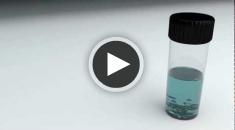Radiator Labs
More than 14 million housing units, or 10 percent of the national housing stock, is heated by steam and hot water. Steam heating, which represents the majority of this market, is particularly inefficient, and is characterized by a central source of steam generation with a convective distribution system via a network of pipes and radiators.
There is no way to control heat transfer through this network, so building managers configure boiler systems to treat a building as a single zone keeping the coldest apartment above a minimum statutory temperature. This results in overheating of the other spaces in the building due to differences in exposure, level of insulation, distribution system heating, and radiator size. Regulation of individual apartment temperatures is usually accomplished by venting the excess heat through open windows. The New York State Energy Research & Development Authority estimates that 15 to 30 percent of the heat is wasted by overheating of steam buildings.
Radiator Labs developed a mechanism that allows heating systems to control heat transfer at each radiator. The Radiator Labs design utilizes an insulating radiator enclosure and control system that allows heat transfer to be turned on and off. The enclosure traps warm air inside the enclosure, and the control system can meter this heat into the room through a fan that forces air through the system.
Based on NYSERDA estimates for waste-heat in conjunction with a preliminary pilot installation, the Radiator Labs system will save approximately 20 percent of a steam-heated building’s energy costs when installed at all radiators on the property. The successful limitation of heat transfer will conserve energy in the central heating system, decreasing the boiler burn duration, and resulting in lower energy consumption. This represents an achievable savings of more than 2 percent of all energy used to heat residential structures in the United States, a potential savings of over $4 billion per year.
Innovators
The Stanford Nitrogen Group developed a new wastewater treatment process, termed “CANDO”, for the removal and recovery of energy from waste nitrogen. The CANDO technology improves the efficiency of nitrogen treatment by lowering energy inputs and enabling energy recovery from waste nitrogen.
Mesdi Systems developed revolutionary equipment for manufacturing lithium-ion batteries, solar cells, and other high precision products that will improve their performance and lifetime with advanced coatings and quality control.
SolidEnergy Systems developed cutting-edge battery technologies to meet the world’s growing energy storage demand. The Polymer Ionic Liquid (PIL) rechargeable lithium battery has four times the energy density of a conventional lithium-ion battery.
NuMat Technologies, Inc is a cleantech spin-out that computationally designs and synthesizes high-performing nanomaterials for gas storage and separation applications. NuMat has developed materials that will fundamentally change the economics of gas storage in natural gas vehicles — supporting the gradual displacement of foreign oil.
Navillum Nanotechnologies developed a process to fabricate quantum dots and other types of semiconducting nanocrystals. When used in liquid crystal displays (LCD), quantum dots improve energy efficiency by up to 35 percent and in solar panels can increase efficiency up to 45 percent.





